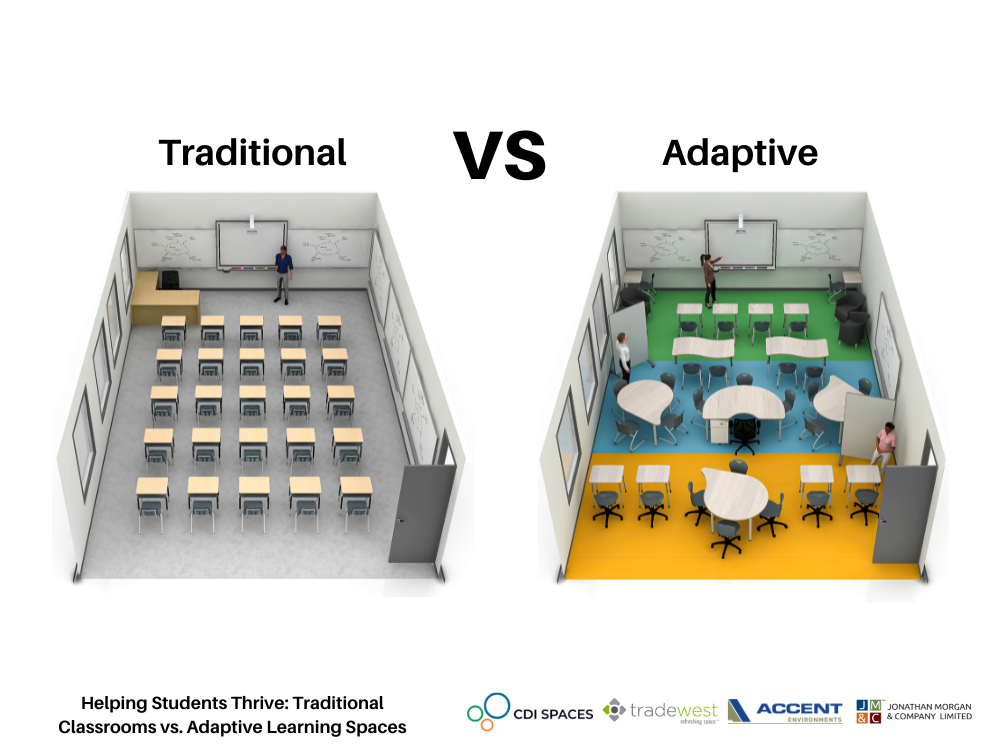Helping Students Thrive: Traditional Classrooms vs. Adaptive Learning Spaces
June 12, 2025

Let’s be real—today’s students aren’t living in the same world their parents or even older siblings grew up in. So why are so many classrooms still stuck in the past?
If we want students to truly thrive—not just get by—we need to take a hard look at the spaces they’re learning in. Let’s break down the difference between traditional classrooms and adaptive learning spaces, and why it matters more than you might think.
Traditional Classrooms: Stuck in Rows and Routines
Think rows of desks, stiff chairs, and the teacher at the front doing all the talking. That’s the classic classroom setup—and it hasn’t changed much in decades.
Here’s the problem: it’s a “one-size-fits-all” system. Every student is expected to learn the same way, at the same pace, with very little flexibility. Group work? Awkward. Movement? Not happening. Creativity? Hard to spark when you're stuck staring at the back of someone’s head.
Sure, traditional classrooms might be neat and orderly, but they’re not built for real-world learning—or real-world learners.

Adaptive Learning Spaces: Built for How Students Actually Learn
Now imagine a classroom that moves with the students. Desks that can be rearranged in seconds. Spaces for group work, solo study, or hands-on projects. A place where students can stand, sit, collaborate, or create—whatever helps them learn best.

That’s an adaptive learning space. It puts the student at the center and gives them choices in how they learn. It also gives teachers the freedom to switch up their teaching style—whether they’re leading a discussion, coaching small groups, or diving into a creative project.
These classrooms are all about engagement, flexibility, and collaboration—skills that students need now more than ever.

Why It’s a Game-Changer
When students have control over how they learn, they’re more engaged. When they can move around, collaborate, and connect with their peers, they’re more motivated. And when teachers can teach in the ways that work best for their students, everyone wins.
Adaptive learning spaces aren’t just trendy—they’re transforming the way students experience school. And honestly? It’s about time.
Traditional classrooms had their moment, but the world has changed. If we want our students to grow into creative, confident, and capable people, we need to give them spaces that support that

So let’s rethink the rows. Let’s welcome movement, collaboration, and choice. Let’s build classrooms that help students not just survive school—but actually love it.
Want help designing learning spaces that match your school’s vision? Let's talk.

